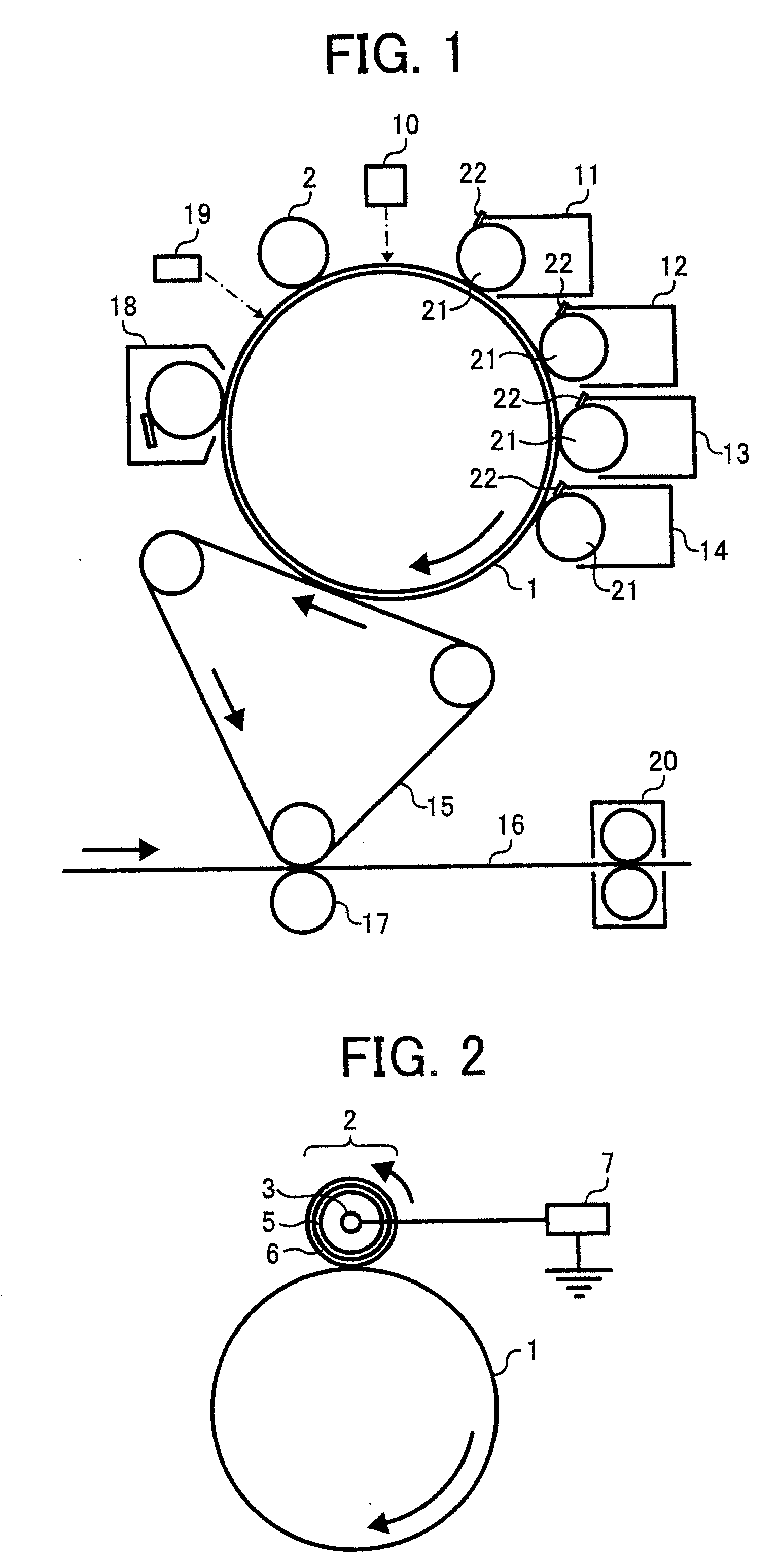Toner, and image forming method and apparatus and process cartridge using the toner
a technology of toner and image bearing, which is applied in the field of toner, can solve the problems of easy deterioration of the charging properties of the toner, the tendency of electrostatic adhesion of the toner particles and embedded in the charger and the image bearing member, and the contact of the charger with the charger
- Summary
- Abstract
- Description
- Claims
- Application Information
AI Technical Summary
Benefits of technology
Problems solved by technology
Method used
Image
Examples
preparation example 4
of Inorganic Material A
[0229]The procedure for preparation of the inorganic material A-2 was repeated except that the molar ratio MgO / SiO2 was changed to 1 / 1 and the concentrations of MgO and SiO2 in the 150-litter slurry were changed to 35.8 g / litter and 53.3 g / litter, respectively.
[0230]Thus, a particulate inorganic material A-4 was prepared.
[0231]As a result of X-ray diffraction analysis of the particulate inorganic material A-4, it was found that the material is made of a single phase of enstatite and has the following properties.
[0232]Average primary particle diameter: 0.09 μm
[0233]Specific surface area: 20.5 m2 / g
[0234]Average secondary particle diameter: 0.40 μm
[0235]Mg / Si atomic ratio in the entire toner: 1.01
[0236]Mg / Si atomic ratio in the surface portion of toner: 0.68
preparation example 5
of Inorganic Material A
[0237]The procedure for preparation of the inorganic material A-1 was repeated except that the calcination temperature was changed to 1200° C. Thus a particulate inorganic material A-5 was prepared.
[0238]As a result of X-ray diffraction analysis of the particulate inorganic material A-5, it was found that the material is made of a single phase of forsterite and has the following properties.
[0239]Average primary particle diameter: 0.15 μm
[0240]Specific surface area: 10.5 m2 / g
[0241]Average secondary particle diameter: 1.7 μm
[0242]Mg / Si atomic ratio in the entire toner: 2.05
[0243]Mg / Si atomic ratio in the surface portion of toner: 2.05
preparation example 6
of Inorganic Material A
[0244]The procedure for preparation of the inorganic material A-1 was repeated except that the molar ratio MgO / SiO2 was changed to 1 / 1 and the concentrations of MgO and SiO2 in the 150-litter slurry were changed to 35.8 g / litter and 53.3 g / litter, respectively.
[0245]Thus, a particulate inorganic material A-6 was prepared.
[0246]As a result of X-ray diffraction analysis of the particulate inorganic material A-6, it was found that the material is made of a single phase of enstatite and has the following properties.
[0247]Average primary particle diameter: 0.09 μm
[0248]Specific surface area: 20.5 m2 / g
[0249]Average secondary particle diameter: 0.40 μm
[0250]Mg / Si atomic ratio in the entire toner: 1.01
[0251]Mg / Si atomic ratio in the surface portion of toner: 1.01
PUM
 Login to View More
Login to View More Abstract
Description
Claims
Application Information
 Login to View More
Login to View More - R&D
- Intellectual Property
- Life Sciences
- Materials
- Tech Scout
- Unparalleled Data Quality
- Higher Quality Content
- 60% Fewer Hallucinations
Browse by: Latest US Patents, China's latest patents, Technical Efficacy Thesaurus, Application Domain, Technology Topic, Popular Technical Reports.
© 2025 PatSnap. All rights reserved.Legal|Privacy policy|Modern Slavery Act Transparency Statement|Sitemap|About US| Contact US: help@patsnap.com


